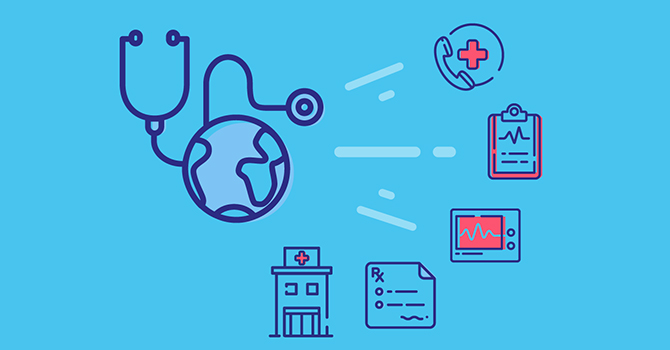A Comprehensive Guide on How Health Care RCM Functions to Improve Billing and Collections
Browsing the intricacies of health care revenue cycle management (RCM) is critical for suppliers intending to boost their billing and collections procedures. The guide unloads the complexities of RCM, from patient enrollment to receivables monitoring, using insights into enhancing each step. Incorporating advanced modern technology and standardized procedures can significantly minimize insurance claim denials and accelerate settlement cycles. Yet, the real difficulty exists in seamlessly combining these aspects to improve capital. As we explore the core components and strategies that drive efficiency, one question continues to be: exactly how can health care entities best placement themselves to grow monetarily in an ever-evolving market?
Comprehending Income Cycle Administration
RCM is a critical management function that includes the entire monetary procedure of individual care, from the initial visit setting to the final settlement of the balance. It is a complex treatment created to determine, accumulate, and take care of the income from the services provided to patients.
The RCM procedure begins when a client routines a visit and prolongs via the client's treatment trip, including payment and collections. A vital goal is to lower the time between getting and offering a solution repayment, hence boosting the organization's economic health. RCM includes various features such as client registration, insurance policy verification, cost capture, coding, claims submission, payment uploading, and managing rejections and charms.
Secret Components of RCM
In the world of Revenue Cycle Administration (RCM), understanding its vital elements is basic to achieving monetary efficiency within medical care companies. RCM is an extensive process that encompasses numerous stages, each critical to making certain efficient payment and collections. The primary elements consist of person registration, insurance coverage verification, charge capture, coding, insurance claim submission, settlement uploading, and accounts receivable monitoring.


Once coded, claims are sent to payers, where accuracy is paramount to avoid hold-ups or rejections - Healthcare RCM. Payment posting includes videotaping the obtained settlements, which allows for the reconciliation of accounts. Lastly, balance dues administration concentrates on tracking and resolving unsettled claims, making sure timely follow-up and resolution
Each part of RCM is adjoined, and inadequacies in any kind of part can interrupt the whole cycle. Therefore, mastering these components is important for doctor to optimize income and enhance their monetary health.
Techniques for Efficient Billing

Systematizing payment treatments across the company is an additional vital strategy. Establishing clear standards for documents, coding, and submission assists preserve consistency and conformity with governing requirements. Educating team routinely on these treatments makes sure everyone is current with the most recent modifications in invoicing codes and payer plans.
Exact charge capture is necessary in stopping income leakage. Implementing routine audits and surveillance systems permits the recognition and improvement of disparities before they affect income. Additionally, keeping open lines of communication with payers aids to promptly deal with any type of conflicts or misunderstandings that might occur.

Lastly, appealing clients early in the invoicing process by offering clear quotes and academic materials about their monetary responsibilities can significantly lower confusion and enhance repayment timeliness. These strategies jointly add to an extra economically healthy and balanced and effective invoicing system.
Enhancing Collections Procedures
A robust collections procedure is crucial for keeping monetary stability within healthcare companies. Given the intricacies of medical payment and the variety of payer requirements, boosting the collections process entails carrying out calculated steps that make sure prompt and precise repayment of services rendered. Central to this is the usage of technology to automate and simplify processes, reducing hand-operated errors and enhancing efficiency. Automation tools can aid in tracking claim conditions, sending out prompt pointers to individuals, and managing rejections much more properly.
Training staff to additional hints understand the nuances of insurance coverage plans and payment codes is equally vital. This expertise empowers them to deal with invoicing inconsistencies rapidly and interact successfully with individuals regarding their economic obligations. In addition, clear and clear person communications are vital. Supplying thorough explanations of fees you can try these out and using versatile layaway plan can increase patient satisfaction and punctual settlements.
Regular audits of the collections procedure should be conducted to identify areas for improvement and make sure compliance with policies. By analyzing information, healthcare companies can recognize patterns, prepare for prospective concerns, and adapt techniques as necessary (Healthcare RCM). Eventually, a well-enhanced collections process not only sustains financial wellness but also contributes to an extra smooth experience for clients and personnel alike
Optimizing Revenue Streams
Structure upon the foundation of a solid collections process, health care companies can better boost their economic stability by tactically maximizing income streams. This entails a multi-faceted approach, beginning with a comprehensive evaluation of existing revenue sources to determine inadequacies and areas for growth. Utilizing innovative information analytics tools makes it possible for companies to get understandings right into payer mix, client demographics, and service use patterns, permitting data-driven decisions that boost revenue capture.
Carrying out automated payment systems can considerably decrease mistakes and accelerate claims processing, ensuring that revenue is accumulated extra efficiently. Moreover, enhancing payer agreements via routine arrangements can boost reimbursement rates and terms, directly impacting the bottom line. Diversifying solution offerings, such as integrating telehealth or wellness programs, can likewise draw in a broader individual base, thus increasing revenue potential.
An additional vital part is improving individual interaction and complete satisfaction, as completely satisfied individuals are more probable to stick to treatment plans and make prompt settlements. Offering versatile payment alternatives and clear billing methods can enhance collections and foster client loyalty. Healthcare RCM. By taking on these techniques, medical care organizations can create an extra resistant monetary structure, ensuring continual development and security in an ever-changing industry landscape
Verdict
Finally, health care Income Cycle Monitoring (RCM) plays a crucial function in optimizing invoicing and collections processes by incorporating crucial parts such as person registration, insurance verification, charge capture, coding, declares entry, and balance due management. By employing innovative innovation, systematizing procedures, and promoting client involvement, doctor can substantially reduce claim rejections, increase settlement cycles, and boost cash circulation. This comprehensive technique to RCM ultimately causes improved economic efficiency and sustainability for health care organizations.
The RCM process starts when a patient timetables a visit and expands through the client's treatment trip, consisting of billing and collections.Another vital element is boosting patient engagement and contentment, as pleased patients are much more likely to adhere to treatment strategies and her comment is here make timely payments. Providing versatile payment options and transparent invoicing methods can enhance collections and foster individual commitment.In conclusion, healthcare Revenue Cycle Administration (RCM) plays a vital duty in maximizing payment and collections procedures by integrating key parts such as individual registration, insurance verification, charge capture, coding, claims entry, and accounts receivable administration. By utilizing sophisticated innovation, standardizing procedures, and cultivating individual involvement, health care carriers can substantially decrease insurance claim denials, increase repayment cycles, and improve money flow.
Comments on “Healthcare RCM Tools to Maximize Revenue and Minimize Denials”